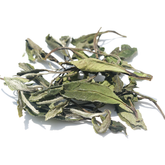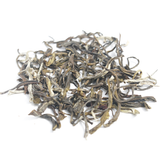What is Tea? Your Simple Guide to Chinese Tea for Beginners
Tea is the second most popular beverage in the world, second only to water. It is a natural drink and very healthy, with Chinese people commonly drinking tea before and after meals. Tea is also the most common drink when receiving guests in China. As the birthplace of tea, China has a tea culture that spans thousands of years, captivating tea lovers around the world.

When many people first encounter tea, they may think of it as just a few leaves steeped in hot water, like a simple Lipton tea bag. However, once you truly enter the world of Chinese tea, you’ll discover that it’s far more complex and fascinating. Why are there so many types of Chinese loose-leaf tea? What are green tea, black tea, oolong tea, and white tea? What does "Six Major Tea Types" mean? Why does tea carry such an intriguing mystery?
This guide is created just for you. It’s an extremely simple and practical beginner's guide to Chinese tea, designed to help you build a solid understanding of Chinese tea. From the origins and botanical characteristics of tea, to selecting the right tea for you, and learning the basic brewing methods, we’ll walk you through it step by step. But before diving in, let’s go back to a fundamental question: what exactly is tea?
What Is Tea? From a Botanical Perspective
Tea, simply put, is a natural beverage made from the leaves of the tea plant. It comes from a plant called Camellia sinensis , commonly known as the tea tree.

All true teas—whether green tea, black tea, white tea, oolong tea, or black tea—come from this plant's leaves. When tea is harvested, farmers typically select the tender buds and the first two leaves of the plant, which are the freshest and most flavorful parts. Think of this plant like a grapevine used to make wine. Just like different types of grapes can produce Chardonnay or Cabernet Sauvignon, but they are all still wine.
The tea tree is an evergreen shrub that was first discovered in regions of China like Yunnan and Sichuan, with Yunnan specifically home to the world's largest ancient tea tree forests . where the climate is warm, humid, and high-altitude. Over time, tea tree varieties have evolved, with different regions growing their own unique flavors.
It's important to note that what you may often drink, such as peppermint tea or chamomile "tea," is actually not true tea. These are herbal infusions made from flowers and plants that don’t come from the tea tree plant.
The Discovery of Tea: An Ancient Legend
One of the most well-known stories about the origins of Chinese tea is an ancient legend passed down through generations. Around 2737 BC, the Chinese emperor Shen Nong, who is revered as the father of agriculture and medicine, was known for tasting a variety of herbs and plants to discover their properties.

While boiling water one day, a few leaves from a nearby tea tree blew into his pot. After the water boiled, he smelled a pleasant fragrance and tasted the water, feeling refreshed and invigorated. This was the moment when humans “accidentally” discovered tea.
Another version of the story is that Shen Nong, while identifying plants in the wild, accidentally consumed a poisonous plant. Feeling extremely unwell, he boiled water and a few leaves from a tree fell into the water. After drinking the brew, he felt miraculously better, and his body regained its vitality.
This accidental discovery marked the birth of Chinese tea. Initially, tea was regarded as a medicinal drink for detoxification and energy-boosting purposes. It wasn’t a regular beverage but more like a medicinal formula.
The Evolution of Tea: From China to the World
Tea's history is vast, tracing back thousands of years in China. It underwent three major transformations: from being used as medicine, then food, and finally, a daily beverage. In the 17th century, tea began spreading worldwide with maritime trade.

Initially, tea was used as medicine to refresh and detoxify. Later, people also ate it as food, often boiling tea leaves with other ingredients, sometimes with salt or other seasonings. It wasn't until China's Tang Dynasty that tea truly became a beverage, with people beginning to boil and drink it. By the Song Dynasty, tea drinking became more refined, with a popular practice of whisking powdered tea into a frothy brew (a precursor to Japanese matcha).

The varieties of tea also evolved. At first, there was only green tea, which retained the natural green of the leaves and had the simplest processing. But after the Ming Dynasty, the emperor promoted drinking loose leaf tea, which spurred the development of many new tea categories. The birth of black tea, for instance, originated in the Wuyi Mountains of Fujian province. An accidental production mishap led to natural fermentation, resulting in black tea's characteristic dark color and rich aroma.
Around the 17th century, tea began its journey to the world. European merchants brought it to the West, where it was initially a luxury item for the wealthy. Soon, tea became very popular in Britain and spread rapidly. Eventually, tea treeswere introduced to India, Sri Lanka, and other countries, where they learned China's tea-making techniques. Tea ultimately became a global beverage. This is how tea evolved from a medicinal plant in China to a widely consumed daily drink around the world.
(Further Reading: Where Does Tea Come From? The History Of Tea )
Summary
Congratulations! After reading this article, you now have a basic understanding of tea. Whether it’s green tea, black tea, or another variety, all of them come from the same fascinating plant—the tea tree. This plant was discovered in China by accident and initially used as a medicinal drink, gradually transforming into a daily beverage. Over time, the varieties of tea have expanded, and tea has spread from China to the world, becoming a part of cultures around the globe.
Let’s continue to dive deeper into learning. What’s the difference between loose-leaf tea and tea bags? Let’s explore this in the next article, " Chinese Loose Leaf Tea vs. Western Tea Bags: What's the Real Difference? "





